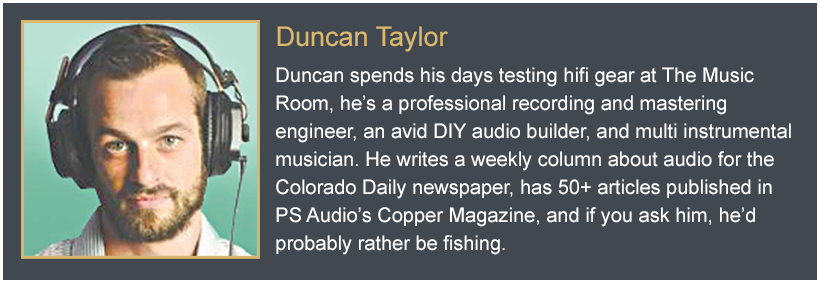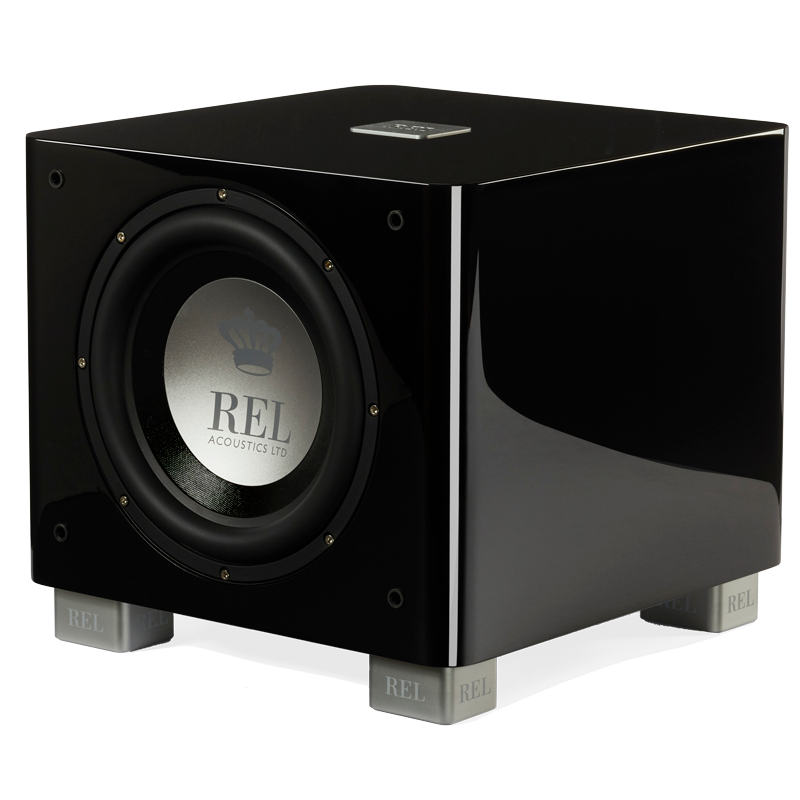Blog
C’Est La Vie
Sometimes Better Is Too Good To Pass Up
There are some moments in life that are so special, they scream out for attention… Properly dialed in, these T/9i subwoofers are earth shattering.
-D Taylor
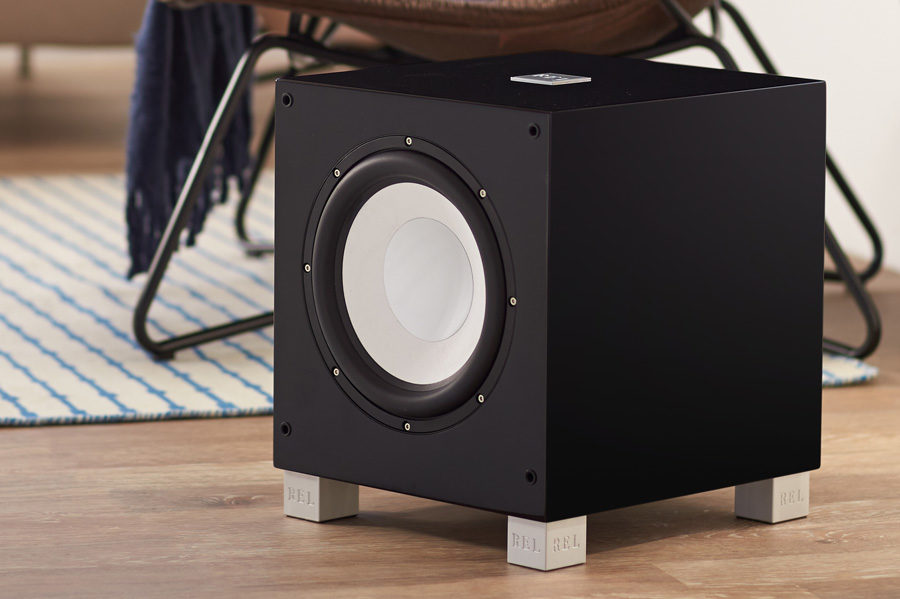
I would guess that your life has — if you happen to be reading a blog on the website of the best subwoofer maker in the world — become governed in part by the inclination to live well. I admit to as much for my own self.
I’m talking about being in the front row of a great venue, listening to your favorite musician. I’m talking about a buddy showing off his new Tesla and really hitting the “gas” after grinning quietly for too long. These “WHAAAT!?” moments may be few and infrequent, but that only helps make them more special and memorable.
One of those moments is the reason for this post. Hopefully I can describe it convincingly. It revolves around my recent experience with the new generation of REL subwoofers in comparison to older REL subwoofers; specifically, an old Strata III.
I really wanted to understand this new breed of subwoofer of REL’s, since John has been telling me for months that I need to hear a current, state-of-the-art pair in my system to really know how far they have come and what’s really possible on a modern REL. He is John Hunter, and this is audio — so, of course he’s right. Yes, please.
Quick as a flash a pair of large boxes landed at my door. That was easy, but the next task at hand was no small feat — to fully set up a pair of speakers for reference listening, and then integrate a pair of subwoofers… in a room. A room being the bane of all audio engineers, albeit a regrettable necessity.
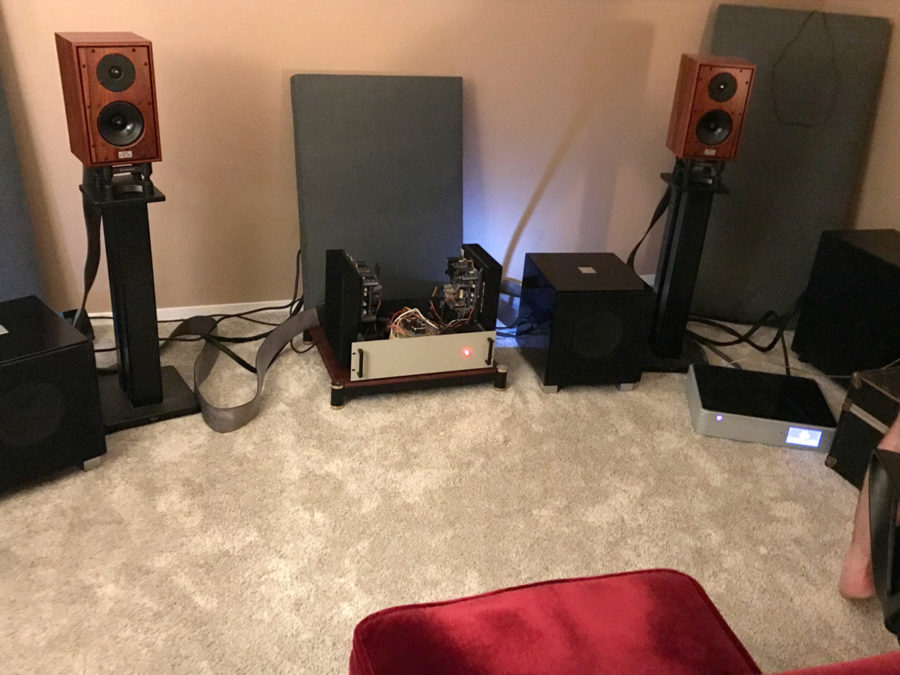
The gear in question for the setup location was, admittedly, a bit over the top (see the photo). My audiophile buddy (and senior design engineer at PS Audio) Darren Myers and I cobbled together a system that was lopsided dollars-wise, kind of absurd, and unbelievable sounding. We didn’t get there without effort, as we shoe-horned it all into a 13’ by 16’ by 8’ room.
The beauty of this room was that it was bordered only by outside walls and internal floor and walls. Nothing bled to the neighbors’ directly. It may have been a small room, but it let us pack a punch with both T/9i subs running free.
Our source was Qobuz on a laptop via USB to a PS Audio DirectStream DAC running the latest “Snowmass” operating system. This ran directly, via balanced silver ribbon cables from MG Audio Design, to what I can say is a final alpha prototype of a roughly $50K commercial amplifier, which was gifted to me by the designer.
The signal continued along more silver ribbon cables from MG Audio to Darren’s set of Harbeth P3ESR mini monitors atop short Iso Acoustics stands which were positioned on the top plate of spiked and sand-filled Target stands.
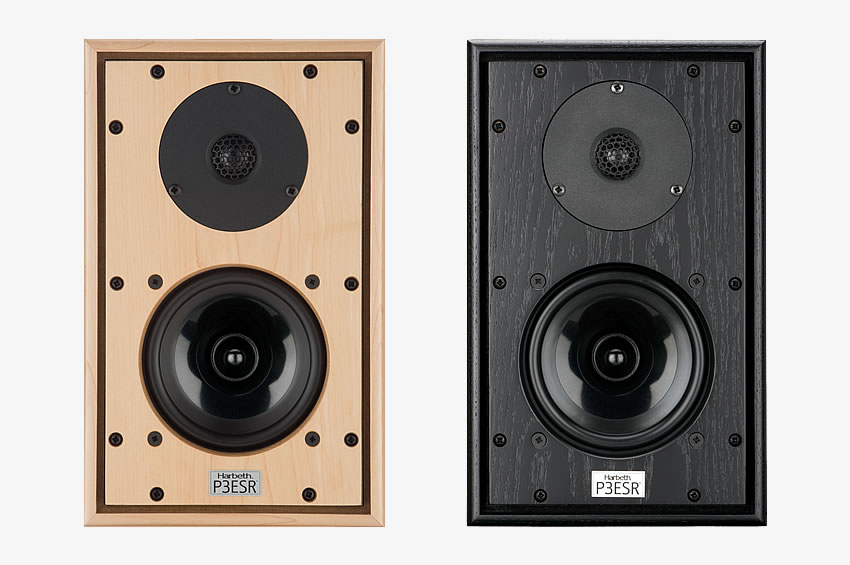
Having integrated a pair of RELs once, and then having done it again and again has by now reinforced to me that it’s never really that difficult. Something about the way they build this product makes it more impervious to room effects than any other subwoofer I’ve listened to.
What is that something? I’m not sure, but it starts with the first and most important decision you’ll make setting up a subwoofer, which is to choose the high level input option. REL more than any other company I’ve seen actively promotes this as the best way forward.
Once you try it you will understand what this does for your system. Besides imparting the exact same sonic characteristics of your amplifier that the speakers are fed, it shows you that getting the timing right is more impactful than any tweak or upgrade.
We found that when we got the speakers well situated for a serious listening session, turning the T/9i subs on enhanced every aspect of the presentation.
Darren defaulted to me for initial positioning, and I went with my tried-and-true method which places the subs 6 or so inches within the arc of listening. The listening arc is a curve directly out from you which has a radius of your distance to the speakers, which includes the (more or less) equilateral triangle between you and the speakers that you’ve set up for listening. I start with the subwoofers just a little inside, and in this room I took into account the open closet to the left of the system and shifted the subwoofers left a bit.
After everything started cooking, we focused on the subs’ crossover level and overall gain level. Our strategy was to dial up reference tracks that we know well, raise the crossover and gain points to a little bit higher than they should be, and continue to listen while we step-by-step lowered the crossover point. Simultaneously, we’d lower the gain so that we could find that magical sweet spot where you stop noticing that the subwoofers are there, and you begin to believe that your speakers magically grew in size.
Properly dialed in, these T/9i subwoofers are earth shattering. They become part of the organism that is your stereo system, and they act like just another section on the register of the instrument you’re listening to. And they never stop on their way to the bottom. Is there another string on the double bass, another foot on the baritone sax. They are the ultimate team players, lifting up the equipment around them.
Our mouths agape, and wide-eyed looks at each other over and over again characterize what was for me one of those epic living well moment-filled evenings.
Fraternal competition
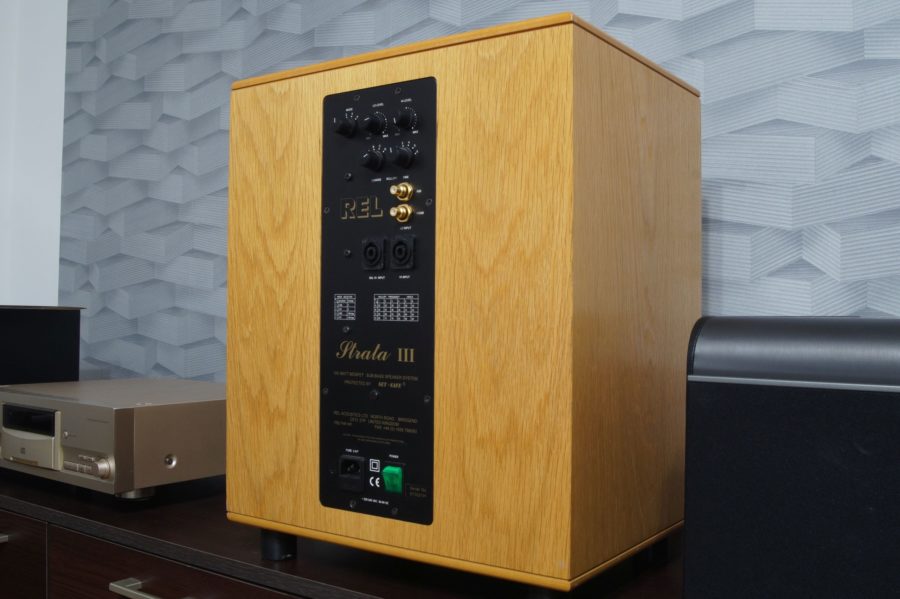
I honestly can’t say much about the competition between the older generation of REL subwoofers and the new ones, other than that there is no competition.
When we finally did pull out the old Strata III’s, it struck me. These were good subwoofers, you know. However, what stuck out to me was that the difference between the older RELs and the new T/9i’s was that with the old Stratas in, the seamlessness loosened up a bit and a sloppy wash of warmth replaced the correct rendition of recording venue and dynamics that the new T/9i’s deliver.
Oh, and the new RELs deliver significantly deeper bass. Overall, the organism didn’t feel quite complete. Right away, we realized there wasn’t the remotest chance for competition between old and new–the T/9i’s blew away the old Stratas.
The conclusion
Ultimately, this exercise served to teach me a thing or two about audio. I could hear clearly why the high level input works so well, and I’m now a committed convert. I would also say, I think subwoofer driver material science must be near its peak because I simply can’t believe how low these T/9i subwoofers can go for what they cost. They’re truly astonishing.
Take my advice, learn from my experience and try out a pair of these in your system, via high level input if you can (active speaker owners, use the low level input). I can confidently say you will be talking to your dog about how good it sounds before too long.
